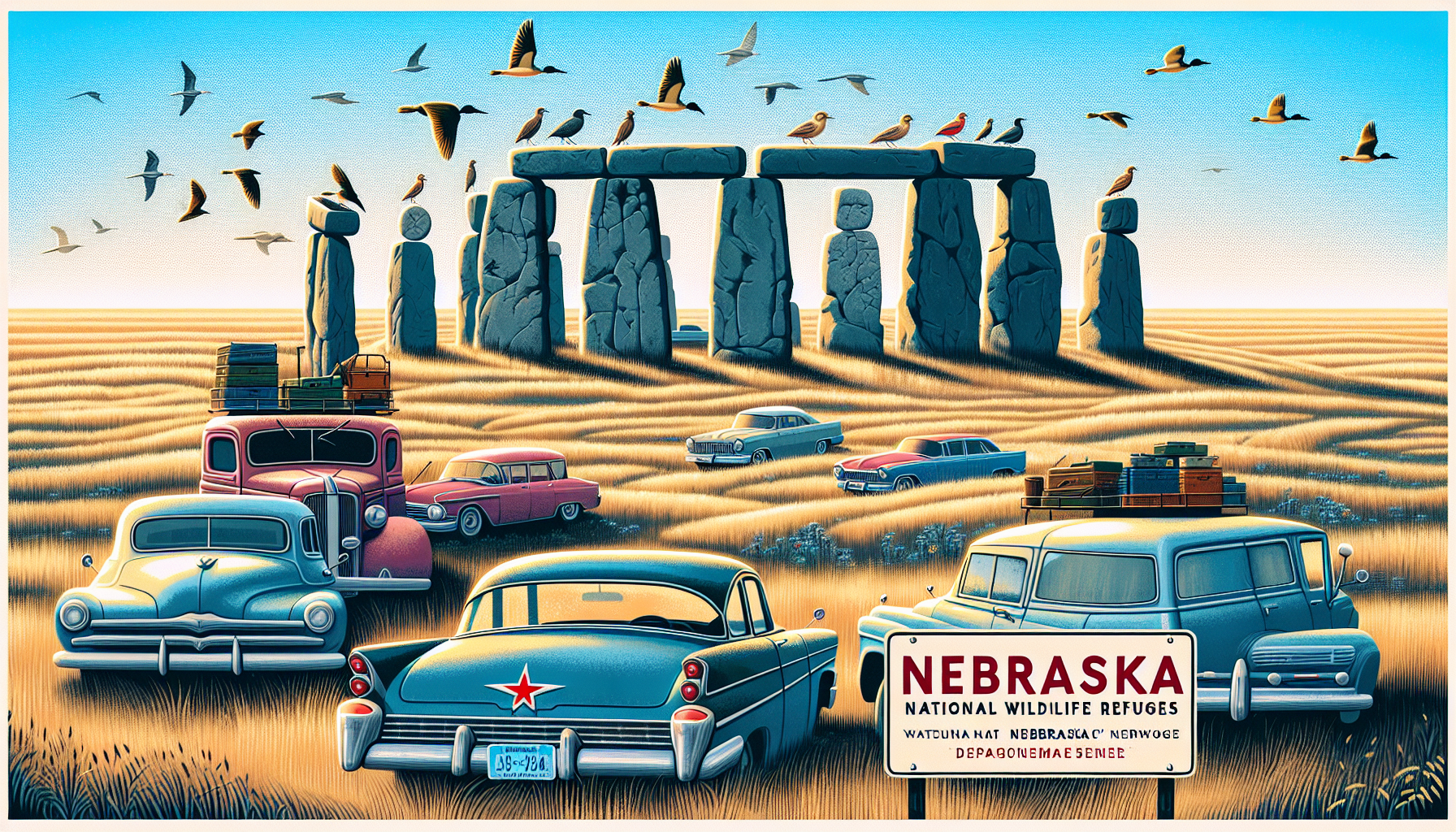Exploring Aquatic Macroinvertebrates in Nebraska

As one travels through the vast expanse of Nebraska, it becomes apparent that the state's diverse aquatic ecosystems support a rich variety of life. Among the most fascinating and ecologically crucial components of these ecosystems are the aquatic macroinvertebrates. These organisms, which include insects, crustaceans, mollusks, and worms, play a critical role in maintaining the balance of aquatic food webs and serve as important indicators of environmental health.
In Nebraska, aquatic macroinvertebrates can be found in a range of freshwater habitats, from the slow-moving streams of the Platte River Valley to the tranquil lakes of the Sandhills region. One of the most species-rich groups of aquatic macroinvertebrates in Nebraska is the caddisflies, which are found in a variety of aquatic habitats throughout the state. Caddisflies, such as the Hydropsyche genus, are an important food source for many fish species, including trout and bass. The caddisfly larvae, which are also known as caddisworms, are detritivores that feed on decaying plant material and help to break down organic matter in aquatic ecosystems.
Another group of aquatic macroinvertebrates commonly found in Nebraska is the crayfish, which are an important component of many aquatic food webs. Crayfish, such as the Devil crayfish (Cambarus diogenes), are detritivores that feed on decaying plant and animal matter, while also serving as prey for many species of fish and birds. In Nebraska, crayfish are often found in aquatic habitats with rocky or sandy substrates, including the Niobrara River, which flows through the north-central part of the state.
The diversity of aquatic macroinvertebrates in Nebraska is also influenced by the state's varied geology and hydrology. For example, the Sandhills region of north-central Nebraska is characterized by a unique landscape of rolling sand dunes and shallow lakes. This region supports a variety of aquatic macroinvertebrates that are adapted to the shifting sand and water levels, including the Sand Lake crayfish (Cryptobranchus alabamensis). In contrast, the Platte River Valley, which flows through the central part of the state, is characterized by a more predictable hydrological regime, which supports a different suite of aquatic macroinvertebrates, including the mayfly genus Baetis.
In addition to their ecological importance, aquatic macroinvertebrates also serve as sensitive indicators of environmental health in Nebraska. Changes in the composition or abundance of aquatic macroinvertebrate communities can indicate broader environmental issues, such as pollution, habitat degradation, or climate change. For example, a study conducted by the University of Nebraska-Lincoln found that changes in the composition of aquatic macroinvertebrate communities in the Niobrara River were correlated with changes in water quality and habitat characteristics.
One of the most effective methods for monitoring aquatic macroinvertebrate communities in Nebraska is biomonitoring, which involves the collection and identification of aquatic macroinvertebrates from specific locations. By comparing the composition and abundance of aquatic macroinvertebrate communities across different locations, researchers can gain insights into the overall health of aquatic ecosystems and identify areas that may be impacted by environmental stressors. In Nebraska, biomonitoring efforts are often conducted by state and federal agencies, as well as universities and non-profit organizations.
In conclusion, the aquatic macroinvertebrates of Nebraska are a fascinating and ecologically crucial component of the state's aquatic ecosystems. By exploring the diversity and ecology of these organisms, researchers can gain a deeper understanding of the complex relationships between aquatic organisms and their environment, and identify effective methods for conserving and managing these ecosystems.
While the aquatic macroinvertebrates of Nebraska are an interesting and complex topic, there are many other fascinating groups of organisms and ecosystems to explore in the state.
In Nebraska, aquatic macroinvertebrates can be found in a range of freshwater habitats, from the slow-moving streams of the Platte River Valley to the tranquil lakes of the Sandhills region. One of the most species-rich groups of aquatic macroinvertebrates in Nebraska is the caddisflies, which are found in a variety of aquatic habitats throughout the state. Caddisflies, such as the Hydropsyche genus, are an important food source for many fish species, including trout and bass. The caddisfly larvae, which are also known as caddisworms, are detritivores that feed on decaying plant material and help to break down organic matter in aquatic ecosystems.
Another group of aquatic macroinvertebrates commonly found in Nebraska is the crayfish, which are an important component of many aquatic food webs. Crayfish, such as the Devil crayfish (Cambarus diogenes), are detritivores that feed on decaying plant and animal matter, while also serving as prey for many species of fish and birds. In Nebraska, crayfish are often found in aquatic habitats with rocky or sandy substrates, including the Niobrara River, which flows through the north-central part of the state.
The diversity of aquatic macroinvertebrates in Nebraska is also influenced by the state's varied geology and hydrology. For example, the Sandhills region of north-central Nebraska is characterized by a unique landscape of rolling sand dunes and shallow lakes. This region supports a variety of aquatic macroinvertebrates that are adapted to the shifting sand and water levels, including the Sand Lake crayfish (Cryptobranchus alabamensis). In contrast, the Platte River Valley, which flows through the central part of the state, is characterized by a more predictable hydrological regime, which supports a different suite of aquatic macroinvertebrates, including the mayfly genus Baetis.
In addition to their ecological importance, aquatic macroinvertebrates also serve as sensitive indicators of environmental health in Nebraska. Changes in the composition or abundance of aquatic macroinvertebrate communities can indicate broader environmental issues, such as pollution, habitat degradation, or climate change. For example, a study conducted by the University of Nebraska-Lincoln found that changes in the composition of aquatic macroinvertebrate communities in the Niobrara River were correlated with changes in water quality and habitat characteristics.
One of the most effective methods for monitoring aquatic macroinvertebrate communities in Nebraska is biomonitoring, which involves the collection and identification of aquatic macroinvertebrates from specific locations. By comparing the composition and abundance of aquatic macroinvertebrate communities across different locations, researchers can gain insights into the overall health of aquatic ecosystems and identify areas that may be impacted by environmental stressors. In Nebraska, biomonitoring efforts are often conducted by state and federal agencies, as well as universities and non-profit organizations.
In conclusion, the aquatic macroinvertebrates of Nebraska are a fascinating and ecologically crucial component of the state's aquatic ecosystems. By exploring the diversity and ecology of these organisms, researchers can gain a deeper understanding of the complex relationships between aquatic organisms and their environment, and identify effective methods for conserving and managing these ecosystems.
While the aquatic macroinvertebrates of Nebraska are an interesting and complex topic, there are many other fascinating groups of organisms and ecosystems to explore in the state.
